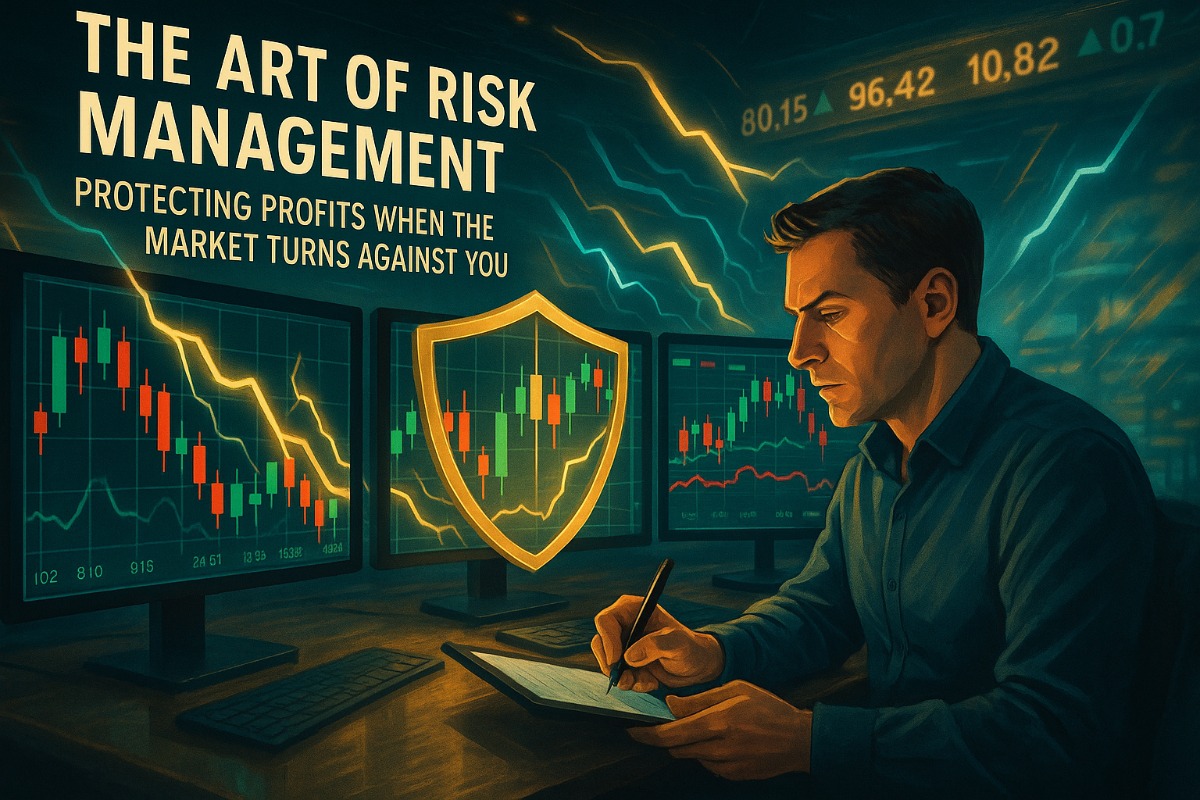The Art of Risk Management: Protecting Profits When the Market Turns Against You
Sep 30, 2025 12:25 am
The Art of Risk Management: Protecting Profits When the Market Turns Against You
Markets have a way of humbling traders. One day, everything seems lined up perfectly-the chart looks right, the sentiment matches your thesis, and the entry feels almost too good to be true. Then, suddenly, momentum flips, volume dries up, and you’re staring at a red trade that seemed impossible only hours before.
This scenario happens to every trader, no matter their level of experience. What separates amateurs from professionals isn’t avoiding losing trades altogether-it’s knowing how to manage risk so that one bad trade doesn’t wipe out weeks of progress.
Today, let’s walk through some battle-tested principles of risk management, and then I’ll show you how a financial strategy outside the charts can also protect your money when markets turn volatile.
1. Accept That Risk Is the Price of Admission
Every time you enter a position, you’re buying a ticket to uncertainty. No system or setup guarantees profit. Even the best strategies come with drawdowns.
The key shift in mindset: stop trying to eliminate risk and focus instead on controlling it. Traders who aim for zero risk often end up paralyzed, while those who embrace it responsibly can keep placing trades long enough for their edge to play out.
Sponsored Content from FinanceBuzz
0% APR Cards Just Dropped
2. Position Sizing: Your First Line of Defense
It doesn’t matter how strong your conviction is-you never go all-in on a single trade. A common guideline is the 2% rule: risk no more than 2% of your total account on one position.
For example, with a $50,000 trading account, your maximum risk per trade is $1,000. That doesn’t mean you only trade $1,000 positions-it means your stop-loss should limit potential loss to that number.
By defining this upfront, you’re building natural guardrails that keep one mistake from spiraling into disaster.
3. Stop-Losses Are a Trader’s Seatbelt
Every professional trader uses stop-losses. They’re not just about cutting losses-they’re about preserving mental capital.
When you know the worst-case scenario in advance, you can approach the trade with clarity instead of fear. Without a stop, your emotions will dictate your exit, and emotions almost always overstay losing trades.
Think of stops not as a sign of weakness but as insurance-just like wearing a seatbelt doesn’t mean you expect a crash, but you’re protected if it happens.
4. Diversification Inside Trading
While investors diversify across sectors, traders can diversify across strategies. For instance:
- A trend-following setup for momentum moves
- A mean-reversion strategy for choppy markets
- A breakout system for volatility spikes
By splitting your approach, you reduce the chance that all trades lose simultaneously. You’re not diversifying for decades-you’re diversifying tactics to smooth out your week.
5. Know When to Sit Out
The hardest trade is often no trade at all. Professionals understand that cash is a position.
When the market is irrational, news-driven, or your edge isn’t showing up, forcing trades only bleeds capital. The discipline to stay flat until the odds tilt back in your favor is one of the strongest forms of risk management.
6. Protecting Profits Off the Charts
Risk management isn’t only about stop-losses and position sizing. It’s also about protecting the money you’ve already earned outside of trading.
Think of your portfolio holistically: the market is just one place where risk lives. Debt, interest, and personal finance decisions can erode profits faster than any losing trade.
This is where smarter financial tools come in-especially if you’re carrying balances that rack up interest while you’re trading.
7. The Psychology of Protection
Good risk managers aren’t just skilled technicians-they’re emotionally resilient. They don’t chase losses, they don’t revenge trade, and they don’t measure their worth by the outcome of a single position.
The same psychology applies when you take advantage of safer financial structures in your everyday money life. Just like placing a stop-loss, opting into tools like 0% APR cards signals that you respect risk enough to protect yourself proactively.
Final Thought: Defense Wins Championships
Trading is often sold as an endless chase for the next big win. In reality, it’s a game of survival. The trader who lasts longest, through both hot streaks and brutal drawdowns, is the one who compounds wealth over time.
Mastering the art of risk management isn’t glamorous, but it’s the foundation of every successful career. Pair that discipline with smart off-chart money decisions, and you’re not just playing the game-you’re playing it to win.
